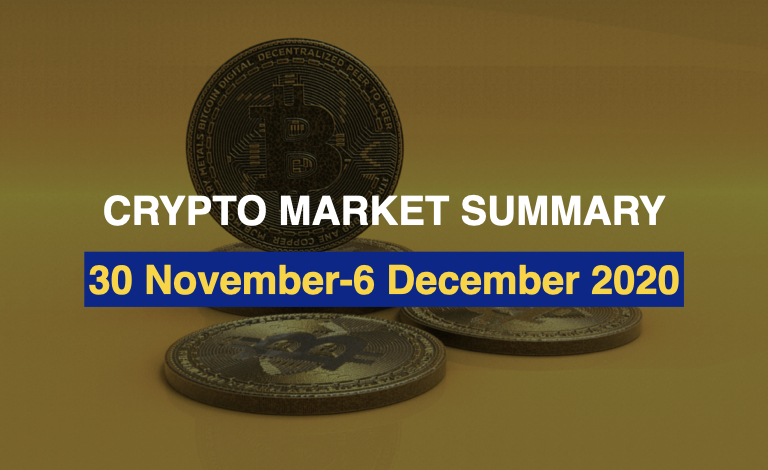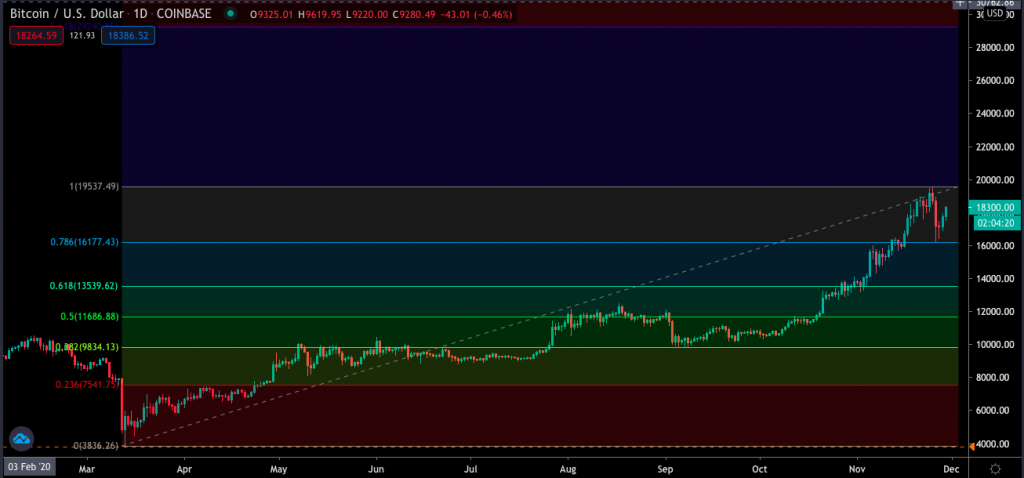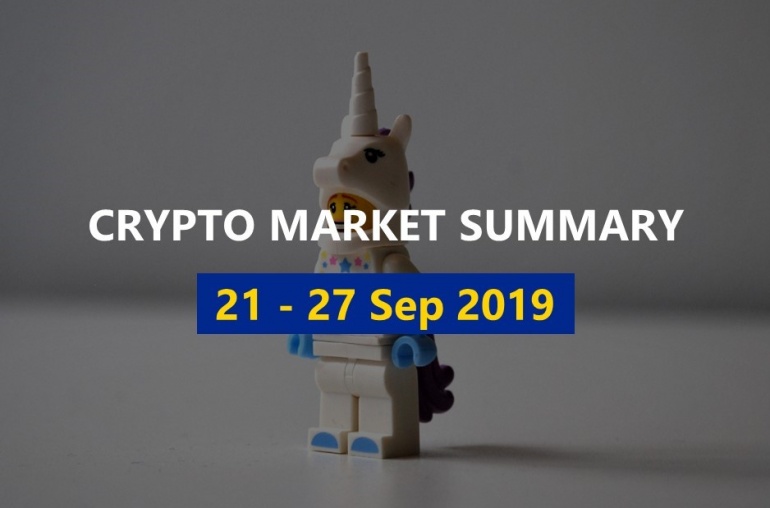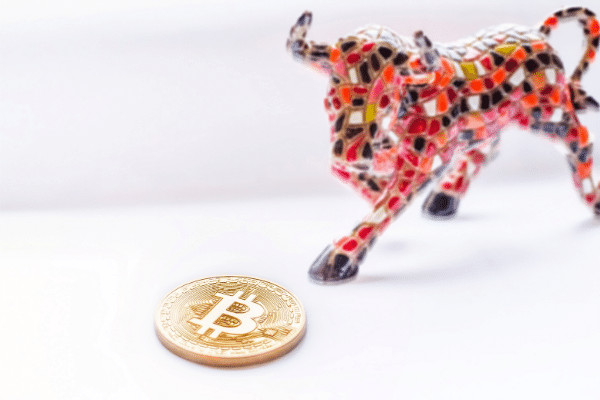
Despite last week’s massive sell-off in Bitcoin, that saw the world’s largest cryptocurrency by market cap just inches from its all-time-high, Bitcoin has rebounded, with its depth far deeper and trading more liquid than in 2017, the last time its price was that high.

More important than price, the number of Bitcoin users continues to soar, with over 30 million wallet addresses with active balances, according to data from Glassnode.
Wallet addresses with active balances are important because although anyone can create a Bitcoin wallet for free, funding it, depending on which jurisdiction an investor comes from, is far more complex.
The surge in Bitcoin wallet addresses with balances also suggests that investors aren’t necessarily leaving their assets with centralized exchanges, but instead managing their own Bitcoin wallets and their own Bitcoin wallet addresses, a major leap in terms of personal responsibility when it comes to cryptocurrencies and an encouraging sign of adoption.
At the same time, CME Group, the world’s first regulated Bitcoin futures market, saw open interest in Bitcoin futures triple this year, making it easier for institutional investors to not only trade in Bitcoin, but to also build financial products such as structured products for clients.
Many of the teething problems that plagued Bitcoin in 2017 have also been addressed, with long delays for transactions now largely solved through software changes and transaction pooling. Times for the mempool, a kind of virtual waiting room for transactions to be processed, have fallen dramatically from the levels witnessed in 2017.
And with so many bonds offering so little yield, the holding costs of Bitcoin are lowered, with even Fidelity Investments noting last month that Bitcoin’s low correlation with traditional assets was an “encouraging first sign” that the cryptocurrency could be used as a portfolio diversifier.
Finally, the hash rate, a common measure of the computing power devoted to securing the Bitcoin blockchain has soared over the past two years, growing exponentially to reflect the greater investment in hardware to turn around transactions and record them more quickly.
That increase in hash rate represents real investment on the part of Bitcoin miners putting fiat currency to support and secure the Bitcoin blockchain. Whereas 2017’s secular rise in Bitcoin was without the attendant improvements in its capabilities, it’s most recent rally is qualitatively different.
Stocks Are Pricing Recovery, Bonds Are Pricing Something Else
When news of not one, but potentially three, highly effective coronavirus vaccines first broke, investors raced to load up on stocks, particularly those from more economically sensitive sectors, including energy, hospitality, travel and financials.
But if the bond market, which is typically sensitive to growth prospects, is buying in, then that hasn’t been reflected in bond prices.
Most times, faster growth means higher inflation, higher yields and lower prices for U.S. Treasuries, but not this time.
And even as investors shun more defensive stocks, including tech and firms that produce cleaning supplies and essentials, the Treasury markets seem to have missed the memo.
When Pfizer (+1.92%) and BioNTech (+4.79%) first announced their vaccine, yields on 30-year Treasuries, typically seen as the most sensitive to growth, leapt, but have since pared back gains and together with 10-year Treasuries, are now lower than before the vaccine candidates were announced.
Bond yields typically rise when prices fall, and the low yields suggest that investors still have a strong appetite for bonds.
One reason that investors are not pushing up bond yields is that in the over a decade after the 2008 financial crisis, faster growth, low unemployment and near zero interest rates did nothing to spark inflation.
And many no longer expect even extraordinary U.S. Federal Reserve action to push up prices faster.
Even at very low levels of unemployment, the Fed struggled to generate any wage inflation, and with so much slack now in the labor markets because of unemployment, investors are betting that inflation prospects are unlikely to budge, despite the economic recovery that a coronavirus vaccine would bring.
Another reason bond yields aren’t budging is of course politics.
Markets had been bracing for a “blue wave” of Democratic victories in both the House and the Senate, but with a diminished majority in the House and the Georgia runoff likely to see Republicans retain control of the Senate, massive fiscal stimulus seems increasingly unlikely.
That leaves the Fed to step in with more bond buying and trying to keep borrowing costs low by soaking up Treasuries.
Inflation-free growth is like discovering an unlimited source for clean energy – it’s the stuff of dreams and would be fuel for an economy accelerating, yet still able to borrow cheaply.
But there are still a couple of reasons for caution.
The implied inflation rate calculated between Treasuries and inflation-protected Treasury securities is at 1.83% up from the 1.81% that it was in October and inching closer to the Fed’s target of 2%.
If the market gets a whiff of rising prices, bond yields could surge in short order, stymying a nascent economic recovery by raising borrowing costs.
And this month’s huge gains in stocks, particularly those most closely tied with the economy, assumes a rapid vaccine approval, development and manufacture.
But as demonstrated by AstraZeneca (+0.28%) and Oxford University’s coronavirus vaccine candidate, manufacturing mistakes, even in such controlled environments as a clinical trial do happen, what more in a mass production exercise.
This month it was revealed that mistakes in the manufacture of AstraZeneca and Oxford University’s coronavirus vaccine candidates led to vastly different efficacies, with 62% for one and over 90% for the other.
If the massive logistical challenge to make and distribute a coronavirus vaccine takes longer than hoped, the same stocks that rallied this month would also be the first to fall off the bandwagon.
And bondholders will be the ones laughing to the central bank.
Platinum Feeds Off Gold’s Decline
Walk into a top recording label executive’s office and chances are the shiny records in neat frames lining the wall are not gold, they’re platinum.
Considered the highest honor in the recording industry, platinum-selling records were once seen as the, well, platinum standard of achievement, with gold being a distant second place.
The same is occurring in commodity markets as platinum is seeing renewed interest, just as gold’s shine is dimming.
Up some 14% this month, platinum is coming off the back of renewed interest in a global push for clean energy and investors looking to buy into a precious metal that also has greater industrial application than gold.
With U.S. President-elect Joe Biden’s pledge to spend some US$2 trillion on green energy, platinum prices have been on a tear in recent weeks, while gold has fallen below US$1,800 on news of effective coronavirus vaccines.
Less than a decade ago, platinum was worth more than gold, today it’s worth just over half, at US$964.80 a troy ounce.
Used in catalytic converters, that filter out harmful emissions from cars, as well as used in jewelry, platinum is also used in a wide variety of electronics, including silicones, hard disks, as well as medical devices.
And while demand from jewelry and car makers may have dropped, platinum has emerged from the coronavirus pandemic as a safe-haven asset for investors looking to diversify into precious metals.
Accompanying that demand has been a fall in supply as platinum mines in South Africa were hit by coronavirus lockdowns.
A recent revival in hydrogen power, with the European Union pledging at the start of this year to make renewable hydrogen a key part in its European Green Deal, has also seen platinum’s fortunes rise.
Platinum is a key component in hydrogen technology, and a car powered by a hydrogen fuel cell would require almost four times more platinum than a diesel car with a platinum catalytic converter – and only platinum can be used in hydrogen fuel cells.
Investors looking to buy into an inflation hedge that also has an economic growth story could do worse than getting into platinum, because if all that glitters isn’t gold, chances are it’s platinum.
*Produced in partnership with leading digital assets hedge fund Novum Alpha.
About the Author



